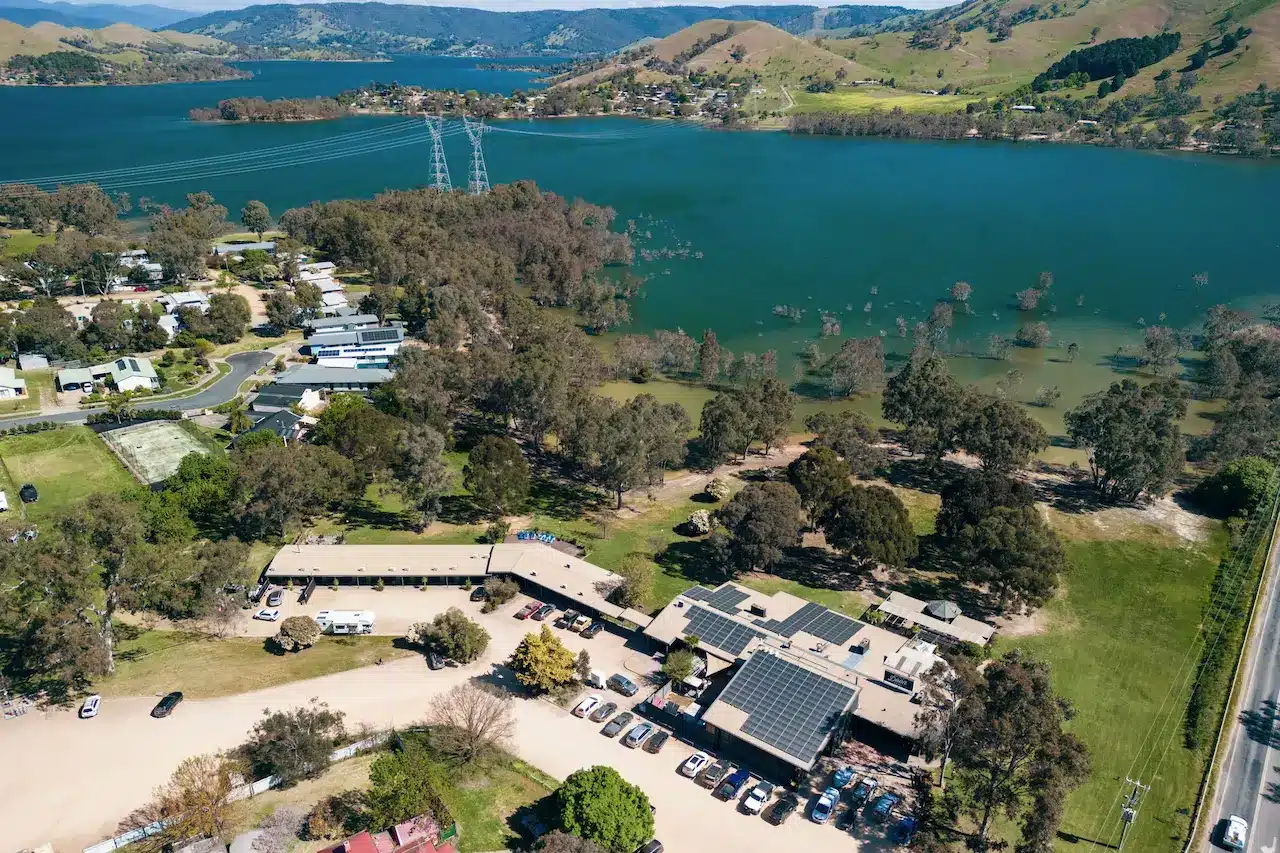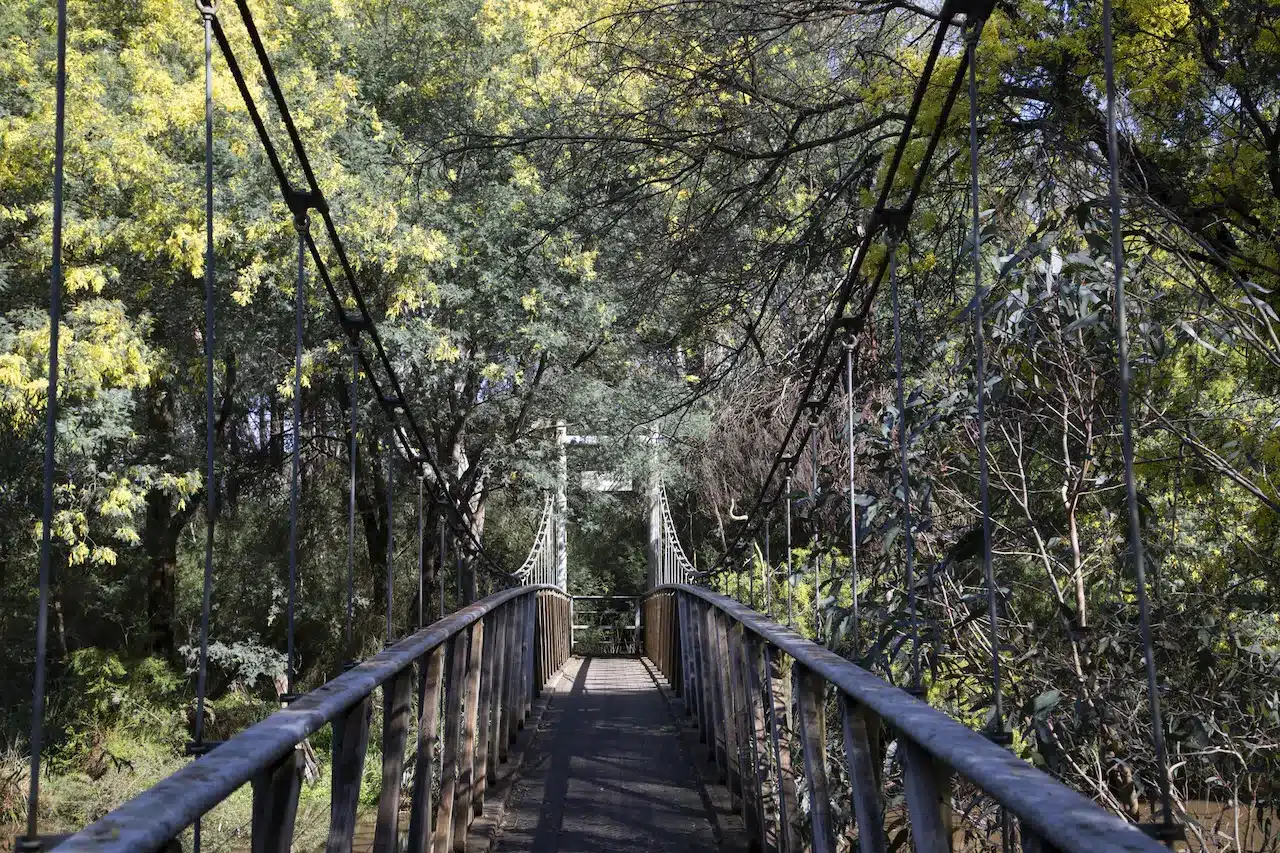The Lake Eildon: A Haven for Outdoor Enthusiasts
Lake Eildon is Victoria’s favourite inland waterway. Cast a line or hitch a trip on the back of a vessel, or float in comfort aboard a houseboat.
Enjoy more than 500 km of shoreline with sheltered harbours, swimming areas and beaches. Launch your boat from one of the many public or private boat ramps located across the Lake.
Lake Eildon is home to 800 luxury houseboats permanently positioned. Take a ride on one and make some memories.
Bring your friends or family together and have a great time water skiing or wakeboarding. You can try kayaking, or simply enjoy the view of the water from the dam wall.
Explore the adjacent Lake Eildon National Park. Camping is available at many places along the shoreline. Keep an eye out for wildlife and enjoy the stunning views.

Discover the history of Eildon Dam and its role in providing food-basket areas along the lower Goulburn River with life-sustaining irrigation.
The early 1900s saw the beginning of harnessing river catchments near the current Lake Eildon. State Rivers and Water Supply Commission developed this water resource to provide irrigation for a vast area of uncultivated land on Victoria’s north plains. The Goulburn-Murray Irrigation District is the largest irrigated area in Australia.
Between 1915 and 1929, the reservoir, also known as Sugarloaf Reservoir was constructed. In 1929 and 1935, it was modified to increase its storage capacity to 377,000ML. This reservoir had a limited capacity to meet the increasing demand for water in Goulburn Valley, and to protect farmers in drought years.
After a thorough feasibility study, it was determined that the existing site of the dam was the best for the construction of a bigger dam. In 1951, the dam was enlarged to its current capacity of 3,334,158 ML, which is six times the size of Sydney Harbour. In 1955, the enlargement of the storage was completed and it was renamed Lake Eildon.
Victoria’s electric needs were also taken into consideration in the enlargement plans. Two 60 MW turbines were installed to increase the original 15 MW capacity of the Sugarloaf Reservoir’s hydroelectric power generation. In 2001, the oldest turbines were upgraded to provide 135 MW of generation capacity.
Exploring the Wonders of Lake Eildon National Park
Parks Victoria acknowledges that Taungurung traditional owners have a deep connection to Lake Eildon National Park and their role in caring for the country.
Enjoy a wide range of watersports by camping near Lake Eildon. In the shadow of the Victorian Alps, you can go swimming, canoeing and waterskiing. You can also sail, fish, or do some sailing. You can go bushwalking, cycling or hiking along the trails. Kangaroos wombats, and many beautiful birds will share your idyllic surroundings. The park is home to a variety of important species, including the Spotted Tree Frog, Brush-tailed Phascogale and large forest owls.
Choose from the well-equipped Devils Cove and Candlebark Campgrounds or the more basic Lakeside, Mountaineer, O’Toole Flat Coopers Point Taylors Creek or Jerusalem Creek Campground. Choose between the Devils Cove or Candlebark Campgrounds, which are well-equipped, or the basic Lakeside Campground, Mountaineer Campground, O’Toole Flat Campground, Coopers Point Campground, Taylors Creek Campground, or Jerusalem Creek Campground.
You can kayak, paddle, boat, sail or waterski on the lake. You can either bring your equipment or rent it from local providers.
You can take a stroll and stop at Merlo lookout, or hike up to Blowhard Summit for unbeatable views of Lake Eildon.
You may encounter hazards in rivers, lakes, and reservoirs. To ensure your visit to Lake Eildon National Park will be safe and fun, follow our water-safety advice.
How to get there
Lake Eildon National Park
The Lake Eildon National Park once was the centre of a gold rush. Abandoned mine shafts in the Jerusalem Block and Fraser Block are a danger. These structures are unstable and may contain bat colonies. These structures are unstable, and they may contain bat colonies.
Within 50 metres from the shore, other boats, navigation aids or swimmers, as well as within 50 meters of fixed or floating structures and vessels flying a dive flag, a five-knot limit is in effect. Be alert for other boats and hazards. For information on how to stay safe when boating, consult the Victorian Recreational Boating Safety Handbook.

